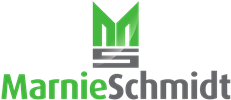 7.2 Competence
7.2 Competence
Last week’s discussion was about “organizational knowledge” as a required resource. We defined what sort of knowledge was required to successfully perform our processes and create a good product/service. This week, we will discuss how we assess our required organizational knowledge versus what we actually have in terms of competence and then what to do if there are gaps.
This section of the standard is basic, clear and easily understood. So why do so many organizations struggle in this area? This is such an area of vulnerability for some organizations, even though the requirement isn’t that difficult. This sections reads as follows:
“The organization shall:
a) determine the necessary competence of person(s) doing work under its control that affects its quality performance;
b) ensure that these persons are competent on the basis of appropriate education, training or experience;
c) where applicable, take actions to acquire the necessary competence, and evaluate the effectiveness of the actions taken;
d) retain appropriate documented information as evidence of competence.
NOTE: Applicable actions can include, for example, the provision of training to, the mentoring of, or the reassignment of currently employed persons, or the hiring or contracting of competent persons.”
That’s it. Pretty simple. Determine what is needed/necessary. Ensure persons are competent to meet those needs. Where there are gaps, fill the gaps. And maintain records.
Many organizations attempt to use job descriptions to satisfy requirement “a)”. The assumption is that a job description will describe the duties to be performed by a person, and it is assumed that they will demonstrate competence in those activities. The job descriptions are typically created and maintained under the human resources department and the human resources department is usually required to produce records of the job descriptions. This is fine as a place to start, but falls far short of the remainder of the section. And human resource departments may resist taking on further responsibility for the remaining requirements, leaving them to the quality department to fill in the gaps.
A quality department may often create supplement competence evaluations to satisfy the requirements of the standard, but then there tend to be lots of disconnects. This model, though very popular, is messy and often frustrating for both the organization and the auditors. There is a great opportunity in this section to tie together both the collection of organizational knowledge (discussed last week) and the assessment of competence against that.
Many companies take this opportunity to create a comprehensive training program that is fully integrated with the quality management system. It begins with the identification of processes. Then the processes are described and that becomes the basis of the training program – ensuring the persons performing the work understand the processes and are competent to perform them. And as persons are chosen and assigned to processes, they are evaluated based on their previous education and experience versus the requirements of the process, and where gaps are identified, they are provided with additional training.
THIS WEEK’S HOMEWORK
How does your organization approach this topic? Is your training program fully integrated? Or do silos still exist? Is your training aligned with your process based quality management system? Or are they running in parallel? Consider opportunities to streamline your organization to meet these requirements as simply as the requirements themselves are written. I’d love to hear your thoughts.
Stay involved and engaged – SUBSCRIBE!
